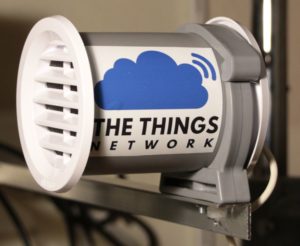Particle sensors could be cheap and easy to use. Disadvantage of lowest cost PM sensors is lack of “calibration”. The best method to measure particle content dispensed in the air is to collect the air sample and analyse it off-line in the laboratory with proper equipment (not cheap at all). Optical particle counting sensors use the light scattering method to detect and count particles in the operating concentration range in a given environment. A laser light source illuminates a particle as it is pulled through the detection chamber. As particles pass through the laser beam, the light source becomes obscured and is recorded on the photo or light detector. The light is then analyzed and converted to an electrical signal providing particulate size and quantity to predict concentrations in real time. The described particle sensor provides information on the particle concentration for given particle concentration range with statistical methods compared to distribution of some common pollutants, like cigarette smoke. The result depends on position of the particle flying by the light beam, its speed and shape.
I used the Honeywell HPM sensor, which is somehow “calibrated” to the tobacco smoke concentration. The result is not accurate, but is good enough to detect the trends and sudden concentration changes. The HPM sensor is not expensive and gives usable results as far as we know how to interpret the output values.
Required materials
Almost all materials are shown in the following photo:
BOM:
- LoRa breakout board
- Sensor board from multisensor project with cut away all sensors except Si7013
- One 8-wire cable with connector Molex 51021-0800 or equivalent (I found cheap chinese cables on ebay – they are available from 2 to 10 wires, with 1,25mm pitch connector)
- One 4-wire cable with same 1,25mm pitch (search ebay for “1.25mm Pitch Electronic Cable Single Header Connector Wire 20cm 2P-10P“)
- Two ventilation grills, diameter 70mm (see photo above, check your local hardware store)
- Piece of 70mm sewer plastic tube, cut to 110mm long piece
- Plastic holder for the 70mm tube
- Two 3D printed parts (equal) for holding the HPM sensor in place
- Small helical antenna
The sensor needs only 5V power supply (most common 5V wall adapter used for phone/tablet charging). I didn’t put this on the BOM list because everyone has different supply of the 5V supplies
Connection diagram
There is nothing special about wiring the whole sensor. Just connect the Si7013 to I2C pins and HPM sensor to USART2 pins. The Si7013 is powered bz 3,3V and HPM sensor is powered from 5V. All required interconnections are shown above with the colors of the cables from ebay.
Read more: Particle sensor with LoRa



